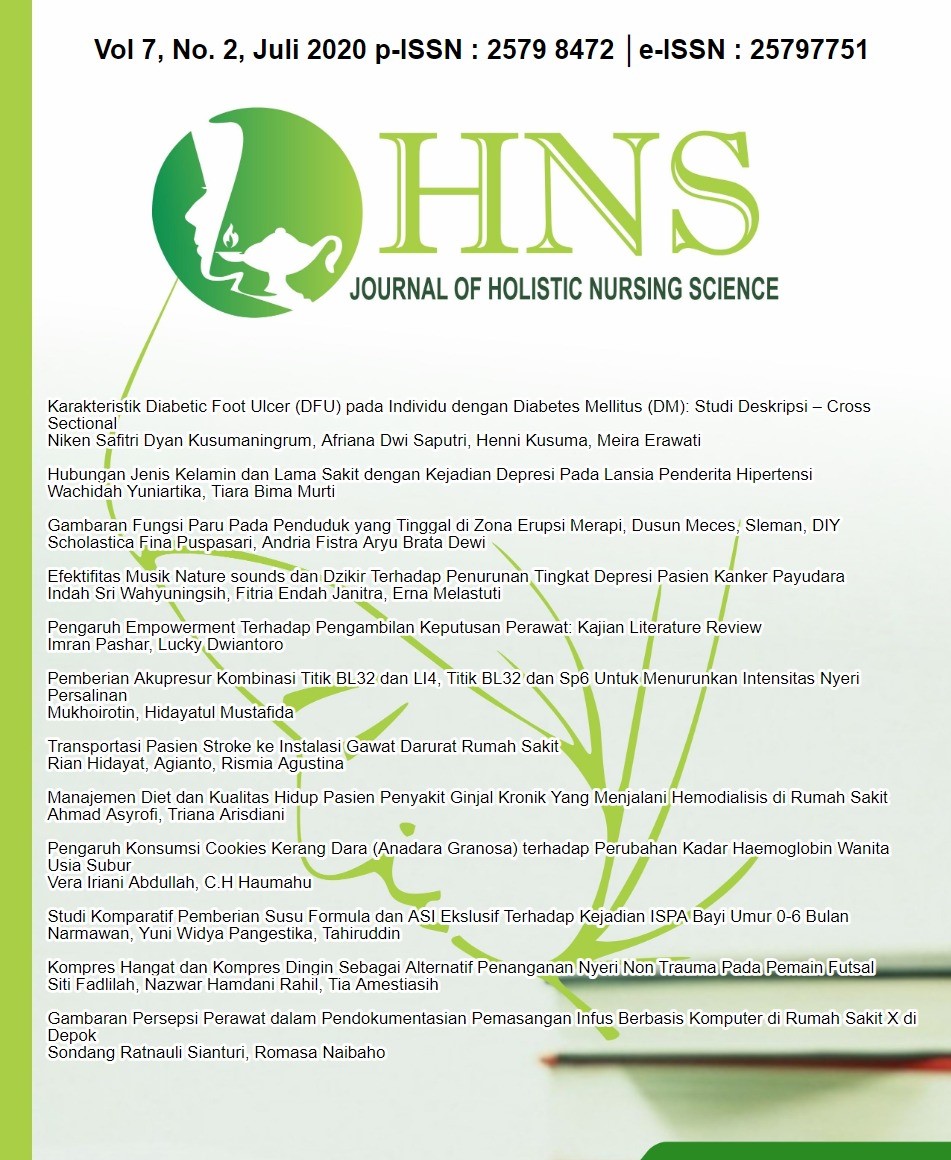Kompres Hangat dan Kompres Dingin Sebagai Alternatif Penanganan Nyeri Non Trauma Pada Pemain Futsal
Main Article Content
Abstract
Pain in futsal players experienced the highest incidence of 48.8% in each match. Non-pharmacological techniques are effective ways to relieve pain, including cold compresses and warm compresses. As a community nurse can apply the therapy for pre-hospital treatment. The study aims to determine the differences in the effectiveness of warm compresses and cold compresses against pain in futsal players in the Forza Futsal field in Yogyakarta. This type of research is an experimental research pre-posttest control group design. The sample in this study is a futsal player who experienced pain in the Forza Futsal Field totaling 32 respondents. The sampling technique used was consecutive sampling. The research instrument was the Bourbanais pain scale value. Analysis of research data using the Wilcoxon test and the Mann Withney test. the pre-posttest pain scale on the warm compress group was 4.00 and 2.00. The pre-posttest pain scale score of the cold compress group was 5.00 and 2.50. Bivariate test of pre-posttest pain scale score of warm compresses and cold compresses obtained p values of 0,000 and 0,000. The posttest bivariate test between warm compresses and cold compresses showed a p-value of 0.683. There is the effect of warm compresses and cold compresses on pain in futsal players at Forza Futsal Field. There is no difference in the effectiveness of warm compresses and cold compresses against pain in futsal players at Forza Futsal Field.
Downloads
Article Details

This work is licensed under a Creative Commons Attribution 4.0 International License.
Authors who publish their articles in JHNS retain full copyright of their work. JHNS does not require authors to transfer their copyright to the journal or Universitas Muhammadiyah Magelang as the publisher. The authors grant JHNS a license for the first publication.
